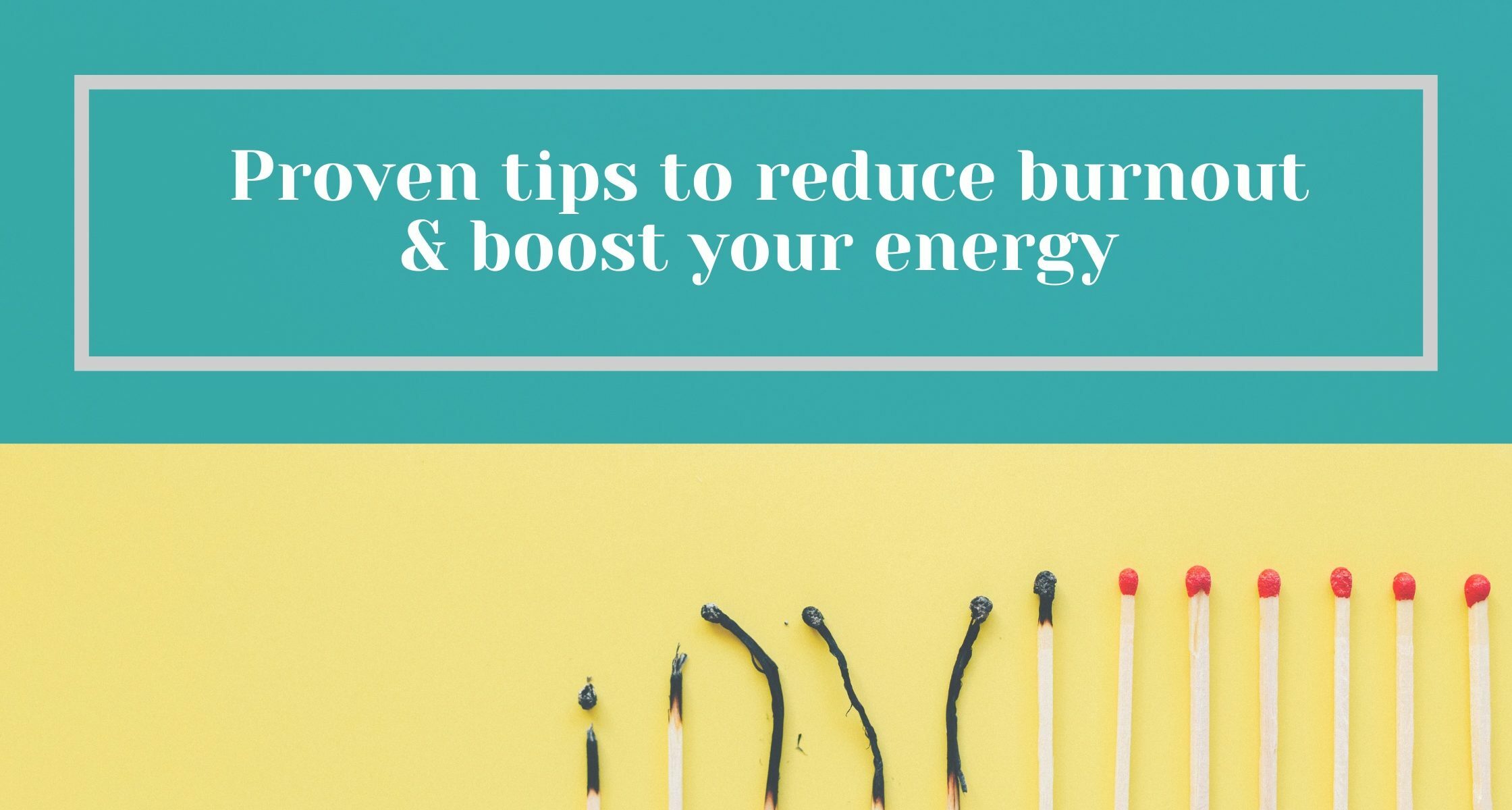Recharge and Thrive: Proven Tips to Reduce Burnout and Boost Your Energy
By Julie Watson

Burnout has become normalized in our society, but there’s a more fulfilling way to live. Find out how to break free from the cycle of stress and rejuvenate your spirit with these proven tips and self-care strategies.
Imagine darkness filling the room as a blaring alarm startles you awake. It’s another early morning as you open your eyes, already exhausted by the weight of your to-do list. No amount of caffeine seems to wake you up anymore. By 10am, you find yourself on your third cup of coffee, as you work on work deadlines and run errands. The laundry and dishes are piling up at home, and it feels like if one more thing gets added to your plate, you might fall apart from exhaustion.
Does this scenario sound familiar to you?
If you’ve had these feelings lately and feel tired no matter how much rest you get, you may be experiencing burnout. Whether it’s due to work, parenting, caretaking, driving to endless appointments, or simply doing the same routine over and over again, burnout or chronic fatigue are common symptoms often reported by my clients or colleagues.
For most people, overwhelm and exhaustion are regular symptoms of burnout. When these symptoms show up, they limit clear thinking, increase forgetfulness, and make it significantly more challenging to get things done.
Let’s look into some of the root causes of burnout and how you can better manage it.
What causes burnout?
According to the World Health Organization (WHO), burnout is an occupational phenomenon. It’s defined in ICD-11 as follows:
“Burn-out is a syndrome conceptualized as resulting from chronic workplace stress that has not been successfully managed. It is characterized by three dimensions:
- feelings of energy depletion or exhaustion;
- increased mental distance from one’s job, or feelings of negativism or cynicism related to one’s job; and
- reduced professional efficacy.”
Although WHO refers to burnout specifically in the occupational context, and states it should not be applied to describe experiences in other areas of life, research tells us that the term covers a much larger population. This includes caregiver burnout, parental burnout, pandemic burnout, and social media/noise burnout.
While burnout may not be classified as a medical condition, it does lead to chronic stress, which is considered the root of many health problems.
Regaining your time back
Creating work and personal boundaries are the first step to counteracting burnout. You first have to get to the root of the problem and find out why you have too much on your plate and the reason you have trouble saying no to new responsibilities and tasks.
Taking a vacation is a great way to help declutter the mind to allow you to reset and recharge. However, if a vacation isn’t possible, and if you’re finding it challenging to create boundaries and improve your schedule, self-care practices are easily attainable and within your control. And also, try to acknowledge that self-care is not a luxury, it’s a necessity.
“Self-care is not a luxury, it’s a necessity.”
Self-care strategies to combat burnout
Whether you have five minutes, an hour or a day, here are some effective self-care strategies to combat burnout.
1. Setting boundaries
Studies show that it’s important to have boundaries between your work and personal life to prevent burnout. You may also need to set boundaries with a loved one, family, colleague, or friend to protect some of your time and energy. This requires learning to be okay with not pleasing everyone and sticking to the priorities that you have set for yourself. Remember, boundaries are there to protect you.
Try this: Set aside time for yourself regularly and schedule it in your calendar. Communicate with others that you are unavailable, which will likely be a practice to say no to other tasks. Be firm yet kind. Take your scheduled time as an opportunity to do what restores you or what brings you joy, recognizing that self-care may be different each time.
2. Intention setting for the day or a task
Setting a clear, doable intention is the key to building a new habit of reducing stress and slowing down. When you set an intention, focus on the step you’re going to take, not the result. The key is to be realistic and flexible.
For example, you might set a clear intention to be fully present and aware as you take a shower or cook a meal over the next week. Setting intentions can allow you to be more present and to complete tasks more mindfully and with purpose. You can even explore what it’s like to transform your daily routines into meditation.
3. Walking outside
Getting outside to take short walks throughout the day, or in the morning or evening, can help clear your mind and energize you. Studies show that walking can also improve sleep quality and boost creativity. If you can’t get outside due to weather or other limitations, you can try walking around your home, office, or on a treadmill if one is available. An extra bonus: the physical activity releases endorphins and can help you cope with stress.
4. Daily meditation or mindfulness practices
A daily meditation or mindfulness practice can help bring more self-awareness and make you more present. Such a practice can serve as a rest break and a brain “refresh,” thereby reducing burnout. Our minds are simply not built to stay focused all day. In fact, productivity experts recommend taking a 10- to 15-minute break about every 50 to 90 minutes. Taking intentional meditation breaks is a great way to get grounded, clear and centered. Not only will this time spent help reduce burnout, but it can also improve productivity as well as your mood and overall well-being.
Try practicing one of these tips in your daily life. I suggest you choose one thing for two to four weeks to start developing a healthy habit. If you like it, make it part of your daily routine. Also, keep in mind that you cannot pour from an empty cup. Practices can only go so far, and there is not a one-size-fit for all. Don’t be afraid to ask for help from your family, employer or the community. If you need additional support, I can offer resources or help you explore other types of self-care that nurture different aspects of your being – physical, emotional, social, mental, and spirit.
Developing your own personal practice
A personal practice can help you elevate your daily routine and regain control over your day. It also needs to be personal enough and deep enough for you to prioritize your self-care and follow through.
Want to learn more? Contact Julie Watson at yogatherapyboise.com





